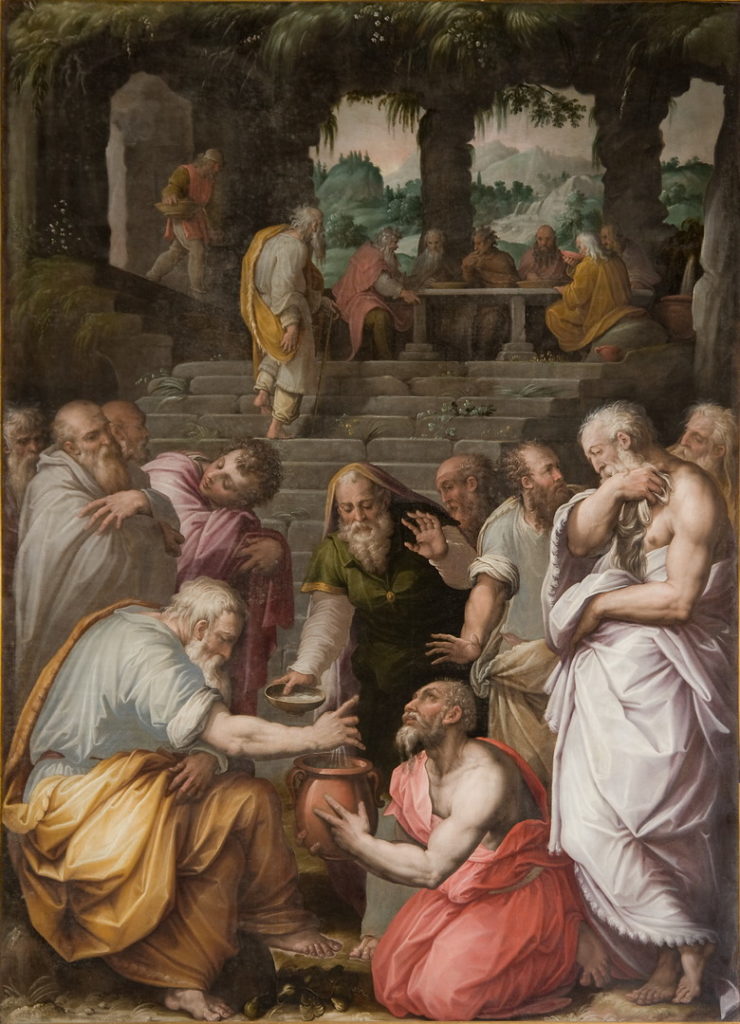Tu sei qui
THE PROPHET ELISHA CLEANSING NAAMAN
While Giorgio Vasari was particularly well known for The Lives of the Artists, the monumental biographical collection dedicated to the Italian artists active between the Middle Ages and the Renaissance, he was also an excellent painter and architect. During his career he had a lot of contact with the artistic world of Umbria: in 1542, on the way to Rome, he stopped in Assisi, together with the local painter, Dono Doni; in 1548 he was involved in the reconstruction of the Rocca Paolina, probably to coordinate the decoration of the project. In 1566 he undertook another trip to Umbria, in order to collect information to add to the second edition of The Lives of the Artists, which was printed in Florence in 1568. The Abbot Giacomo Dei, recognizing the innovation in Vasari’s language, succeeded in obtaining three large canvasses from the painter for the monastery refectory, which were put in place in 1566, the year of Vasari’s second visit to Umbria. The Old Testament scene, The Prophet Elisha cleansing Naaman takes place within an architectural ruin overcome by vegetation, and is characterized by the eloquent expressions of the figures that demonstrate a wide range of emotions and behavior. There is a strong reference to Michelangelo in the figure shown in profile in the right foreground: an old man who is watching the event closely, and raising his hand to his beard. His gesture is that of the marble Moses at the tomb of Julius II in the church of San Pietro in Vincoli in Rome.


